SEANA Spring 2023 Camp
| Excursion 10: Northern end of Wilson’s Promontory NP | Sunday full day |
| Leader for Vereker Range: Greg Gilbert | Facilitator: John Poppins |
We departed Yarram (which was then fine) soon after 8:00 am. Along the way, fine drizzle turned to steady rain. Just over an hour later, we arrived at our destination of Five Mile Road at the northern end of Wilson’s Promontory.
On arrival it was considered too wet to get out. We then ventured around 20 km south to Tidal River, hoping to find adequate shelter. Rain was then lighter. Some sought a shot of caffeine from the café, while others went for local walks around the campgrounds, river and beach.
We then returned north to our original destination at Five Mile Road. Rain was light and intermittent, and naturalists were keen to get at what they had come for. Our party of 25 then split into two groups.
David Mules led a group of 15 to Miller’s Landing. Greg Gilbert led the other ten (including your reporter) around 2 km to Vereker Lookout. The mainly sandy track was gently uphill most of the way out. Scenery from high points was spectacular and would have been superb on a fine day.
We walked through typical Wilson’s Promontory scrub/heathland dominated by Banksias (Saw & some Silver), occasional brown stringybark and lots of white Kunzia. We also saw incidental clusters of Hakeas and sheoaks (and used the shelter of one for lunch). There were several species of wattles, and large patches of grass trees (mostly around the saw banksias seemingly in response to fire), and many other shrubs. Lower down we found at least three species of flag iris, sun orchids (closed for the day), spider orchids and finally, the elusive dainty mosquito orchids (which had reportedly been abundant last month.
Animals observed throughout the day, included an emu with at least 5 chicks, a sea eagle, a male flame robin, several black wallabies (swamp wallabies in NSW) and grey kangaroos. Though not an ideal day for reptiles, a fine tiger snake and several small skinks were also seen.
All got wet, but enjoyed a great field expedition that was very well planned and led.
Philip Bachelor (FNCV)
| Towards Millers Landing |
When we arrived at Five Mile Road car park the majority of the group opted to continue to Tidal River in the hope that the heavy rain, which resulted in 18mm during the day, and winds of up to 106 km/hr would ease and enable us to spilt into two groups, one group of 10 people to Vereker Outlook, and the second group of 15 people to Millers Landing.
While waiting for a break in the weather some found themselves a nice warm place to shelter over a coffee while others investigated Tidal River and the river entrance. Birds we observed were Pacific and Silver Gulls, White-faced Heron, Black-faced Cuckoo-shrike, White-browed Scrubwren and Welcome Swallow. There was also a not so welcome Tiger Snake!
The group heading for Vereker Outlook left and we headed through Silver Banksea and Brown Stringybark scubland growing on sand.
Of note was a very showy display of White Kunzea.
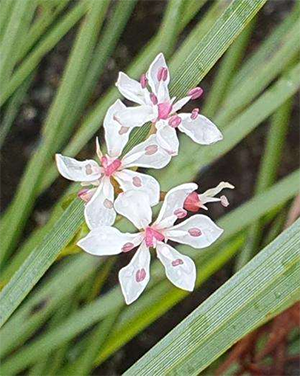
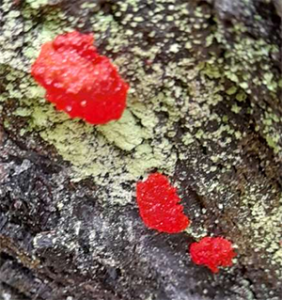
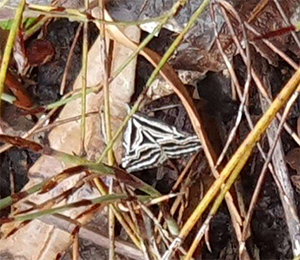
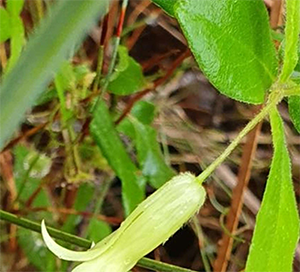
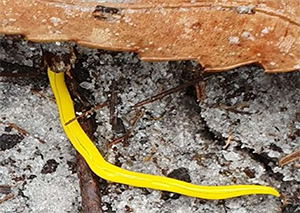
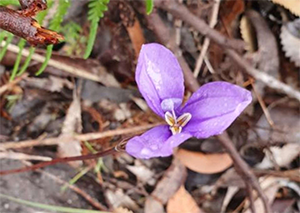
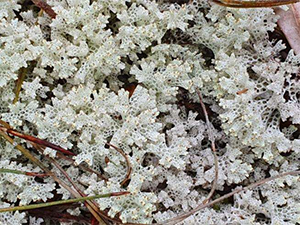
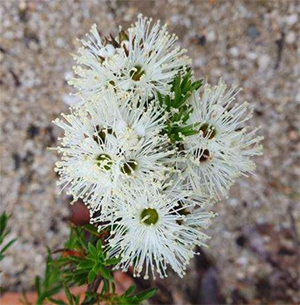
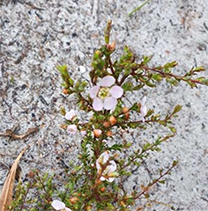
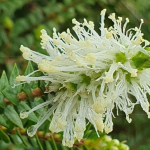
Birds were sparse. A Scarlet Robin was seen as we set off. Also seen or heard in the course of the walk were an Emu, Grey Currawong, Grey Shrike-thrush and Eastern Spinebill.
Animals observed were Kangaroo and Swamp Wallaby. Echidna activity was also evident.
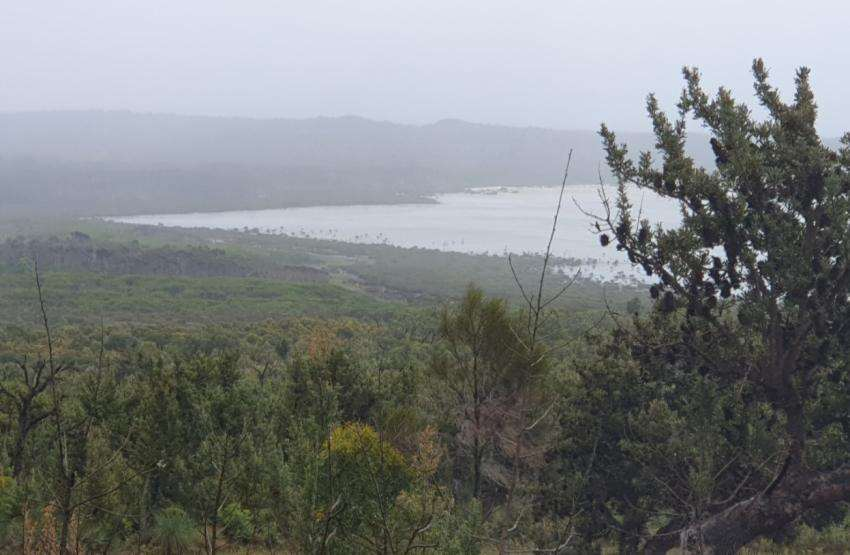
The view through the rain showing White Mangroves on the edge of Corner Inlet, not far from Millers Landing. These mangroves are the southern-most mangroves in the world.
The Millers Landing group split into smaller groups with some returning earlier, a few continued to complete an approx 5km walk, unfortunately falling just 400m short of reaching Millers Landing itself.
Thanks to David Mules for leading this excursion and Alix Williams for facilitating the Millers Landing group.
By Glenise Moors